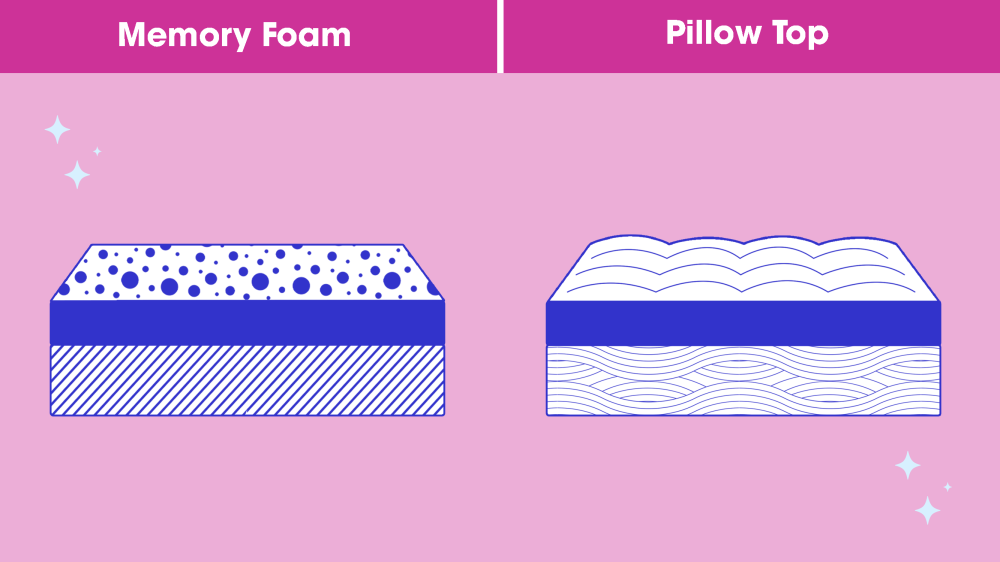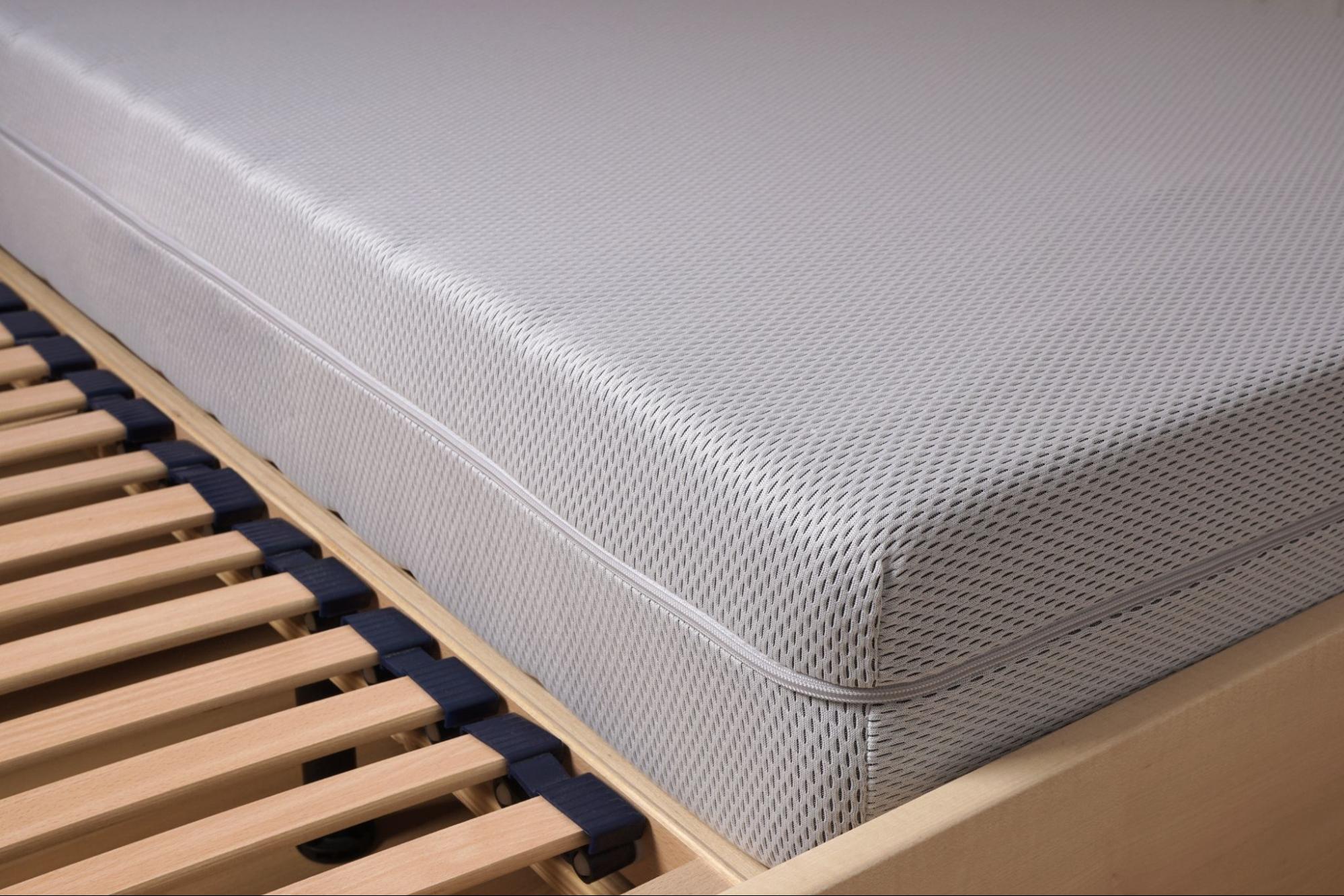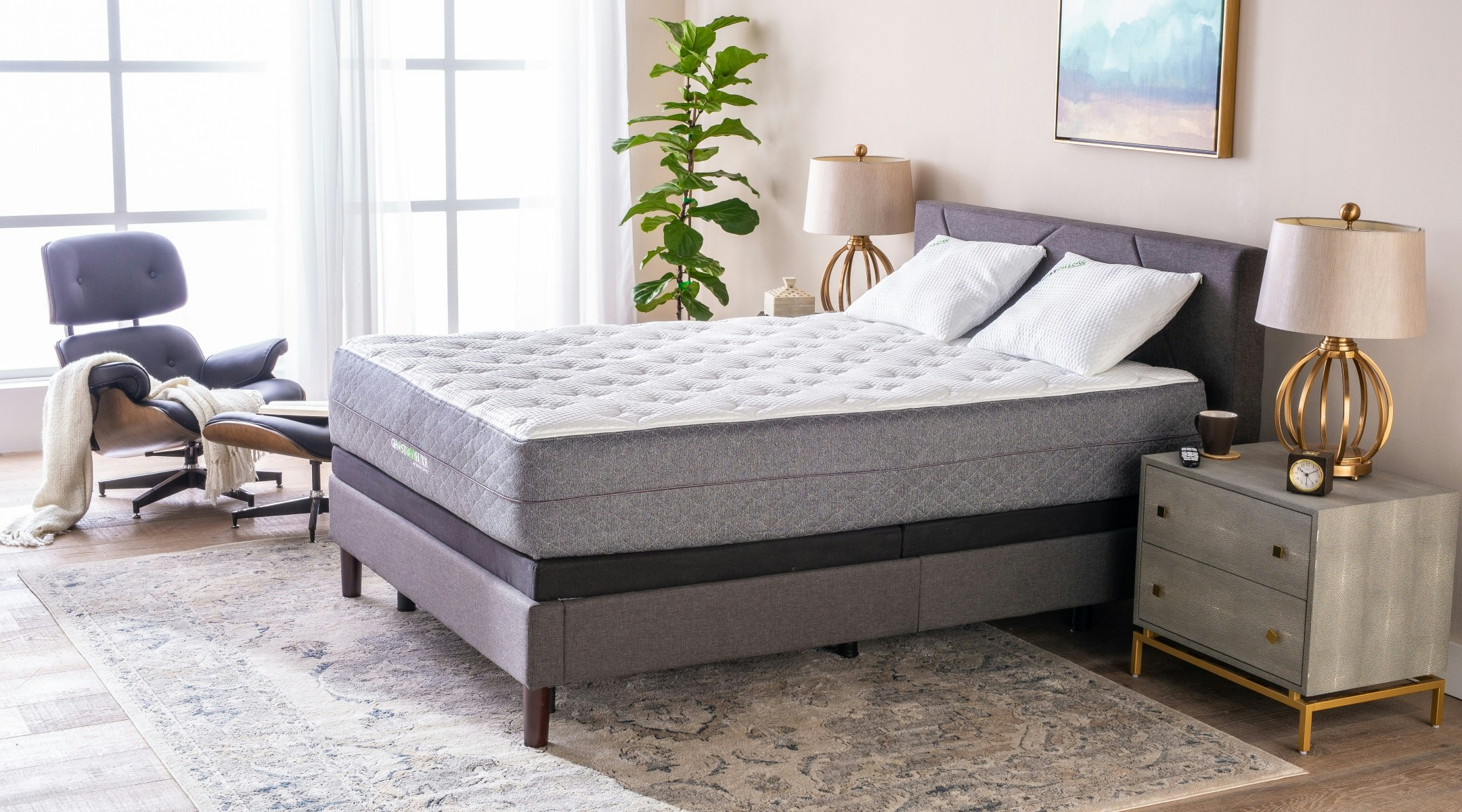Introduction
In the quest for the perfect night’s sleep, the choice between a foam and spring mattress often tops the list of considerations for discerning sleepers. Both options present distinct advantages and drawbacks that cater to different preferences, body types, and sleeping habits. This comprehensive guide dissects the foam versus spring mattress debate, examining factors such as comfort, support, durability, cost, and maintenance to help you make an informed decision in your pursuit of restful nights.

1. Understanding the Basics
- Foam Mattresses: Typically composed of memory foam, polyurethane foam, or a combination of both, foam mattresses contour to the body, providing pressure relief and spinal alignment. Memory foam, in particular, is known for its ability to mold to the sleeper’s shape and distribute weight evenly.
- Spring Mattresses: Also referred to as innerspring mattresses, these consist of a steel coil system covered by layers of padding and upholstery. Springs provide bounce and breathability, with varying levels of firmness determined by the type of coils (e.g., Bonnell, pocketed, continuous) and their arrangement.
2. Comfort and Support
- Foam: Offers excellent pressure point relief due to its ability to adapt to the body’s curves, reducing the risk of pain in sensitive areas like hips and shoulders. Ideal for side sleepers and those seeking a cradling feel.
- Spring: Provides a more traditional bouncy feel, with varying degrees of support based on coil count and design. Good for stomach and back sleepers who require firmer support to maintain spinal alignment.
3. Motion Transfer
- Foam: Known for minimal motion transfer, making it a top choice for couples or light sleepers who share a bed. The dense material absorbs movements, preventing disturbances from a partner’s tossing and turning.
- Spring: Prone to higher motion transfer due to the interconnected or loosely packed coil systems, which can transmit movements across the surface. However, pocketed coils significantly reduce this issue by isolating motion to individual springs.
4. Durability and Longevity
- Foam: Depending on the density and quality of foam used, these mattresses can last anywhere from 6 to 8 years, with high-density memory foam potentially lasting longer. Quality foams resist sagging and maintain their shape well over time.
- Spring: Generally, spring mattresses have a lifespan of 6 to 9 years, with higher-quality models lasting longer. The durability is influenced by the gauge of the coils and the quality of the materials surrounding them.
5. Temperature Regulation
- Foam: Tends to retain heat due to its body-hugging nature, although advancements like gel-infused or plant-based foams and open-cell structures aim to improve airflow and dissipate heat.
- Spring: Naturally more breathable due to the space between the coils, allowing for better air circulation and heat dissipation, making them a cooler option for hot sleepers.
6. Cost and Value
- Foam: Prices vary widely depending on foam type and quality, but generally, memory foam mattresses are slightly more expensive than standard spring models. However, the potential for longer-lasting comfort and health benefits may justify the investment.
- Spring: Offers a wide price range to accommodate different budgets, from budget-friendly options to high-end luxury models. The variety allows for customization based on budget and desired features.
7. Maintenance and Care
- Foam: Generally low maintenance, requiring occasional rotation to prevent indentations. Avoid excessive moisture and direct sunlight to prevent damage.
- Spring: Also requires rotation to prevent uneven wear, along with regular inspection of the coils and upholstery for signs of damage. Some spring mattresses allow flipping, extending their lifespan.
Making the Right Choice
Ultimately, the decision between a foam or spring mattress comes down to personal preference, budget, and specific needs. Consider factors such as your sleep position, sensitivity to motion, temperature regulation requirements, and the importance of durability. Testing mattresses in-store or taking advantage of sleep trials offered by online retailers can provide valuable insights into what feels most comfortable for you. Remember, the best mattress is one that promotes restful sleep, supports your body, and enhances your overall well-being, leading to a healthier and happier you.
8. Environmental Impact
- Foam: While traditional foam mattresses have faced criticism for their non-biodegradable nature, many manufacturers now produce eco-friendly alternatives. Look for certifications like CertiPUR-US, which ensures the foam is made without ozone depleters, heavy metals, and certain flame retardants. Plant-based memory foam is another green option that reduces the reliance on petrochemicals.
- Spring: The steel used in innersprings is recyclable, making spring mattresses potentially more eco-friendly at the end of their life cycle. However, the padding and upholstery layers may contain non-recyclable materials. Consider brands that prioritize sustainability throughout their production processes.
9. Noise
- Foam: Virtually silent due to their solid structure, foam mattresses are ideal for those who are easily disturbed by noise during sleep.
- Spring: Depending on the type and age of the coils, spring mattresses can produce squeaks or creaks, especially when weight is shifted abruptly. Pocketed coils significantly minimize noise as they operate independently.
10. Adaptability and Adjustability
- Foam: Once compressed, foam mattresses tend to maintain their shape, offering less adjustability over time compared to spring mattresses.
- Spring: Spring mattresses, particularly those with individually wrapped coils, can better adapt to changes in body weight or sleeping positions over time. This makes them a versatile choice for those whose needs might evolve.
11. Customization
- Foam: Some manufacturers offer customizable foam layers, allowing sleepers to adjust the firmness level to their liking. This can be particularly beneficial for individuals with specific support needs.
- Spring: Although less common, some spring mattresses allow for customization through interchangeable pillow-top layers or adjustable firmness settings in select models.
12. Health Considerations
- Foam: Memory foam is often recommended for individuals with chronic pain or those recovering from injuries due to its pressure-relieving properties. However, some individuals may be sensitive to the chemicals used in foam production, which can off-gas initially.
- Spring: Spring mattresses are generally hypoallergenic, as the open structure discourages dust mites and allergens from accumulating. They can be a good choice for allergy sufferers, but it’s essential to choose models with hypoallergenic covers and padding.
Conclusion: Weighing Your Options for Optimal Sleep
Navigating the foam versus spring mattress debate involves a deep dive into understanding your unique sleep needs and preferences. Each technology presents a distinct set of benefits and considerations that cater to different lifestyles. By assessing factors such as comfort, support, durability, cost, environmental impact, and personal health, you can make an educated decision that leads to a mattress tailored to your best night’s sleep. Remember, investing in a quality mattress is an investment in your overall health and wellbeing, making it a choice worth careful consideration.




